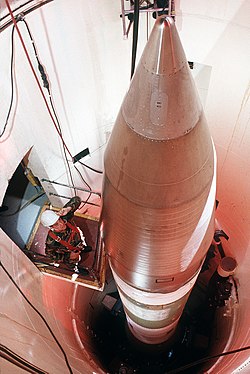| 625th Strategic Operations Squadron | |
|---|---|
 E-6 Mercury TACAMO aircraft | |
| Active | 1996-present |
| Country | |
| Branch | |
| Role | Nuclear Targeting, Airborne Launch Control System, Ballistic Missile Analysis |
| Part of | Air Force Global Strike Command |
| Garrison/HQ | Offutt Air Force Base, Nebraska |
| Motto(s) | Si vis pacem, para bellum (Latin for 'If you Wish Peace, Prepare for War') |
| Mascot(s) | Harvey the RV[ citation needed ] |
| Decorations | Air Force Outstanding Unit Award |
| Commanders | |
| Current commander | Lt Col Brian B. Lane[ citation needed ] |
| Insignia | |
| 625th Strategic Operations Squadron emblem [a] [1] [2] |  |
The 625th Strategic Operations Squadron is a United States Air Force nuclear missile control & support squadron. It has been located at Offutt Air Force Base, Nebraska since activating in 1996 and is assigned to the 95th Wing of Air Force Global Strike Command.
Contents
- Mission and operations
- Airborne Launch Control System operations flight
- Intercontinental ballistic missile targeting flight
- Airborne Launch Control System training and evaluation flight
- Test and analysis flight
- Intercontinental ballistic missile targeting systems flight
- History
- Lineage
- Assignments
- Stations
- Missiles, aircraft, and systems supported
- Decorations
- See also
- References
- Notes
- External links



